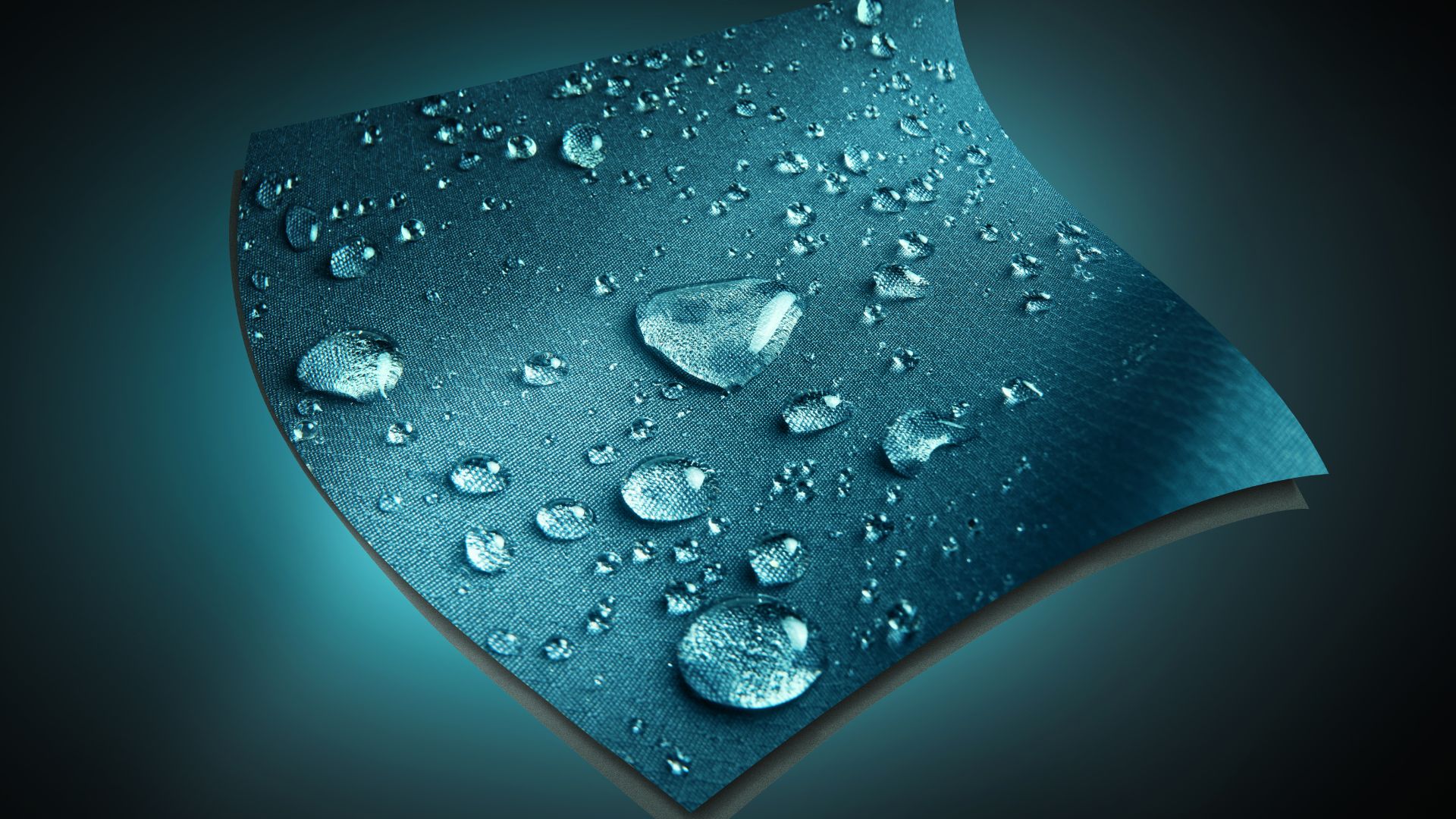Waterproof Breathable Outdoor Wear

Outdoor enthusiasts such as hikers, runners, cyclists, climbers and others require waterproof clothing that enables breathability for comfort and even possible hypothermia protection. Otherwise, moisture may accumulate and become trapped against the skin causing discomfort and even hypothermia.
Modern waterproof-breathable fabrics such as GORE-TEX, eVent and Polartec Neoshell offer relief by keeping moisture out while still allowing perspiration to escape. But how?
Waterproof-Breathable Textiles
Waterproof breathable fabrics combine two key functions – they protect from rain, snow, and wind while simultaneously providing comfort by allowing moisture from your body (water vapor) to escape while engaging in physical activities. Their outer layer’s pores are too small for raindrops to pass through but large enough for the release of body vapor during activity.
Gore-Tex, as one of the premier waterproof breathable composite fabrics, dominates this market. Their fabrics combine nylon or polyester face fabrics and membranes made of either ePTFE (expanded polytetrafluoroethylene; commonly known by its acronym Teflon) or Polyurethane resins to form waterproof yet breathable textiles.
Polartec’s Neoshell fabric stands up well against GORE-TEX’s waterproofness and breathability; unlike ePTFE fabrics, its highly porous polyurethane membrane does not require a separate protective face layer to keep dirt at bay; additionally it boasts high abrasion resistance and mechanical stretch making it suitable for technical outerwear applications.
Waterproof-Breathable Membranes
Membranes are at the core of any waterproof-breathable jacket. Constructed of durable materials like polytetrafluoroethylene (PTFE), these membranes prevent wind and rain from penetrating the fabric while dissipating sweat vapor from your body, effectively keeping you protected and comfortable in any condition.
The best membranes feature billions of microscopic pores that prevent liquid water droplets from entering, but still allow sweat vapor molecules to escape, keeping you dry and comfortable.
A membrane is attached to a face fabric in a variety of densities and thicknesses, always featuring a durable water repellent (DWR) finish for protection from rainwater. 2-layer fabrics feature their membrane inside their face fabric for extra insulation; 3-layer fabrics have their membrane outside their face fabric without needing extra lining; these tend to be lighter, packable and more affordable while not offering as much warmth than their insulated counterparts. While popular manufacturers use proprietary membranes such as Gore-Tex and eVent, other brands like Polartec Neoshell and Pertex Shield use very thin polyester or polyurethane membranes with excellent performance at reasonable prices.
Waterproof-Breathable Fabrics
Waterproof-breathable fabrics combine layers of materials and technology to produce outerwear that provides protection from rain, wind and cold while still allowing body vapors to escape; an essential feature for outdoor activities.
These fabrics typically consist of 2-3 layers and operate under the following principle: small pores in the membrane repel liquid water while still permitting moisture vapor through. Most often, nylon or polyester face fabrics provide color and protection while waterproof membrane coating takes over as the main contributor of protection and color.
GORE-TEX waterproof breathable fabric has become synonymous with waterproof protection in recent years, from leisure pursuits and professional sports events alike. Offering standard two and three layer constructions along with various precise lining options, this ePTFE membrane offers protection for everything from leisure pursuits to professional sports competitions and outdoor events.
Waterproof-Breathable Clothing
Waterproof-breathable fabrics prevent rain and snow from permeating through while still allowing body vapor produced through physical activity to escape, providing shelter in cold, wet weather while still permitting their wearer to enjoy activities safely and comfortably. Such fabric types are frequently found in mountaineering jackets or other outdoor apparel designed to offer protection while still permitting an individual to participate fully.
Microporous membranes are laminated onto fabric faces treated with durable water repellent (DWR) finishes, such as polyester and ePTFE face fabrics treated with durable water repellent technology. Polyester-ePTFE face fabrics are commonly found in 2- and 3-layer waterproof-breathable fabrics; other options such as TPE are also available.
Breathability is vital in helping maintain body temperature by allowing perspiration to escape without chilling the wearer. Breathability of garments is typically measured in grams per square meter over 24 hours; the higher this number is, the more breathable its fabric. Unfortunately, breathability between manufacturers varies considerably and results can differ considerably; for the highest-grade two and three layer waterproof-breathable fabrics with ratings to indicate hydrostatic head and breathability can provide invaluable comfort and peace of mind.
